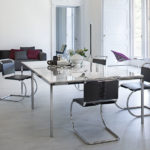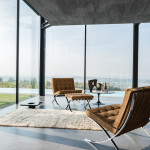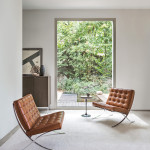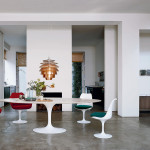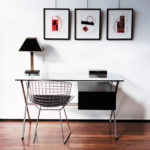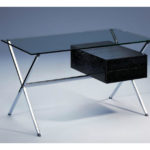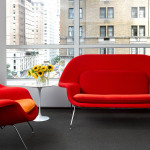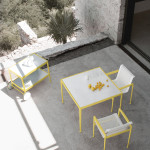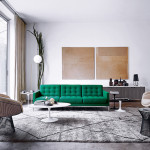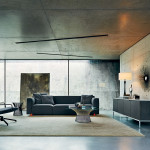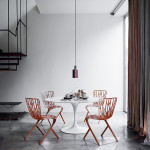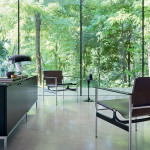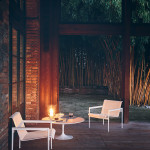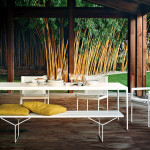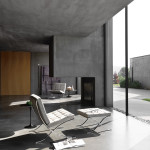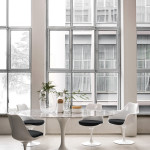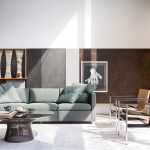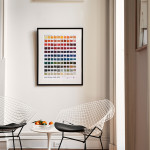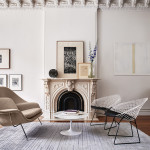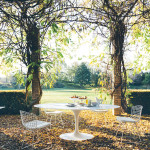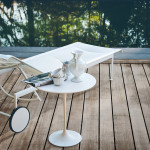In 1938 Hans Knoll, German emigrated to the U.S. due to racial laws, she opened a small laboratory for the creation of furnishings to create modern interiors and in 1943 she married Florence Schust, architect and designer graduated from the Cranbrook Academy of Art in Bloomfield Hills in Michigan and with her enlarged the company, which in 1946 it became Knoll Associates, and then finally changed into 1951 into Knoll International, a name still in force.
The two spouses immediately call Florence Knoll’s classmates to design for the company such as Eero Saarinen, son of the director of the school, the Finnish architect Eliel Saarinen, and Harry Bertoia, at the registry office Arieto Bertola sculptor and designer of origins Italian. Everyone involved within the Knoll embraces the creative genius of the Bauhaus and the Cranbrook Academy of Art, which was then an American interpretation of the Bauhaus school itself, to create new types of furniture and environments for everyday life, for home and work. Craftsmanship combined with technology through the use of design fixes their point of view and shapes the values that still live within the company today.
In 1957 Eero Saarinen designs what is still the most successful product of Knoll today, or the Tulip series, made up of chairs, tables and small tables with continuity between the shell and the base, convinced that “the lower parts of the tables and chairs create an intricate and irritating confusion … wanting to end the chaos of the legs; wanting to make a chair a unit again. ” The Tulip table, better known by the name of Saarinen, is still today the best-selling, most imitated and most desired table by design enthusiasts in its variants with the top in white or black laminate, or in marble in multiple colors.
Harry Bertoia instead creates a collection of chairs for the Knoll, inspired by those of the Eames couple, where the theme of discontinuity returns: a steel rod easel support holds a steel rod mesh body of various shapes. The Bertoia collection turns out to be a true masterpiece, a meeting point between design and art: a light and transparent chair, where the air, which passes through the metal mesh, becomes the true protagonist of the project.
Since the early years, Knoll has distinguished itself from the other famous American furniture design company, Herman Miller, for the choice of an extremely rigorous and rationalist design and for the courageous re-presentation on the market of some historic furnishings such as those designed by the Maestro. Mies Van Der Rohe: the Barcelon collection, which still remains one of the best-known design icons today.
Following the premature death of Hans Knoll in 1955, his wife Florence took over the reins of the company, preferring then to leave the presidency in 1960 to fill the position of artistic director of the design department; throughout his long life his motto will be “Good Design is Good Business”. Florence Knoll designs some very elegant furnishings for her company, which are useful for furnishing public and private spaces, among the most important in America, for illustrious private customers or public companies. Among them we can remember the Florence Knoll sofa with rigorous shapes, on a chromed steel structure, the tables with elementary and refined shapes with marble or glass tops and the containers, later many imitated, in natural or lacquered wood on a steel base polished chrome.
In more recent years, Knoll has made use of the collaboration of the best contemporary international designers such as Frank O. Ghery, Piero Lissoni, Barber Osgerby.

